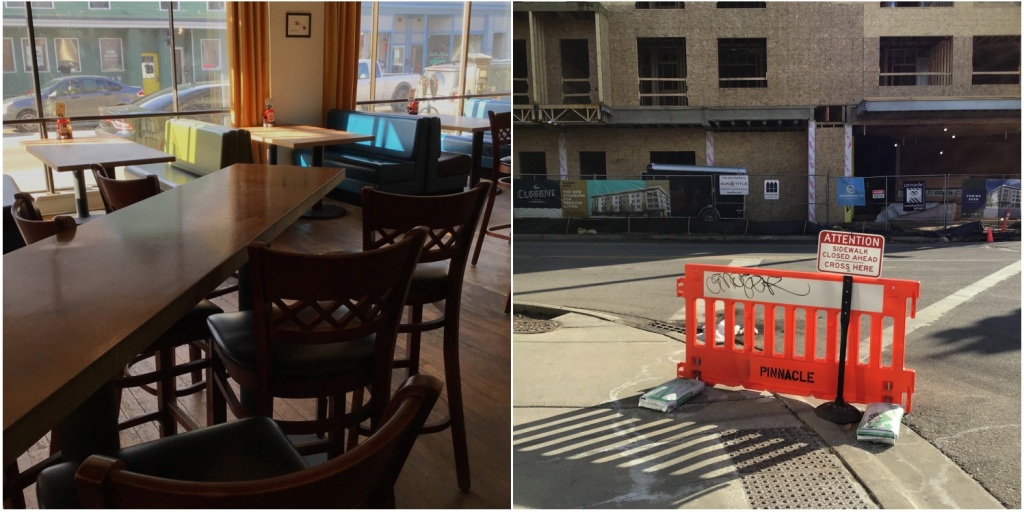
One reaction to fast food, instant convenience, and impatience all around is to do the opposite; to praise slow food and things that cannot be rushed. Among the user-groups at the Flickr.com photosharing website is one for Slow Photography. Among hobbyists and professionals who use large-format view cameras, such as Stephen Shore, and NYC documentary photographer of the 1930s, Berenice Abbott, or her inspiration before that, Eugene Atget, the equipment’s size and weight imposes a slower pace of responding to something that catches the photographer’s eye. Instead of point and shoot, the rhythm is more like fetch the cases, erect the tripod, compose the shot and calculate the exposure, wait for the right moment and then make the exposure.
After browsing a retrospective of Shore’s pictures (Selected Works 1973-1981) from the 1970s around the USA – ordinary places and subjects but recorded with great intensity and precision, both in sense of color (accent) and in the overarching geometry, I stepped out of the library into the bright winter light of an unseasonably mild day to see the scenes nearby with equal intensity and deliberateness, snapping a handful of images with a pocket camera (iPod Touch) and selecting two as illustration above. What is it about tempo or velocity of noticing, of recording, and indeed moving through the world that affects the visual experience?
In simplest terms, the vehicle determines what one does or does not see. At 30,000 feet of long-distance altitude and at jet speed only the largest features on the ground stand out. But traveling by motorscooter or on foot (or as newborn crawling) then the world looks altogether different: even small things draw attention – texture, smell, sound, and juxtapositions that can be comical, preposterous, or unexpected. It is not necessarily the hardware for recording photos that leads to intense vision and composition. Once one learns the lessons of slow photography, then it should be possible to convey something like the large-format photography experience on any recording device, digital or film-based. And perhaps all large-format photographers need not always shoot with slow pace, either. After all, before the rise of cassettes of 35mm film, the photojournalists carried 4″x5″ cameras to record news subjects: sports, disasters, and other situations where quick decisions and rapid compositions and exposure calculations were needed. But generally speaking, someone working in a slow technology will therefore see things with greater care and precision no matter if the result is abstract art or it is documentary illustration like the WPA team of photographers, including Walker Evans.
The visual experience of making the photo and also viewing the photo seems to add another dimension to a similar photo taken with less deliberateness. Besides the ordinary dimensions of length, height, and volume (depth), the pictures that make the geometry palpable and the bit of color stand out feel somehow electrified or holographic, practically leaping off the page (or the screen). Even though the collage of two exposures at the top of this article is not as precise or as carefully framed as the ones in the Stephen Shore book, for the purpose of illustration, there is something akin to the 8″x10″ compositions by his hand and eye.
The upshot of this brief excursion into the speed of recording pictures is that clunkier gear by its nature, its form factor, can lead to a habit of seeing (and thinking) that is more intense and made with more consideration than photos snapped off without too much reflection. The same relationship between tempo and resulting ideas may be present outside the world of photographic representation, too. Slow chefs and slow diners may savor their food more; slow readers may indulge in the texture of the syllables more; and slow walkers may notice more of the world around them than speedy commuters. Certainly, speed matters – not just to arriving quickly, but also with regard to the experience along the way.
